New in September 2022 - 10.6 µm Laser Substrate Heater
The PARADIM facility is equipped with a 10.6 µm laser substrate heater which enables substrate temperatures as high as 2000 °C. This upgrade is a dramatic improvement over conventional resistive heaters, which are limited to temperatures <1100 °C.
We anticipate that the expansion of accessible growth conditions will enable synthesis of new phases and development of new growth strategies. Not only can high temperatures facilitate crystallization of complex crystal structures, but they allow volatilization of additional molecular species to enable thermodynamic control of film stoichiometry. Thermodynamic control of stoichiometry has been repeatedly shown to dramatically improve properties compared to controlling film stoichiometry with flux calibration, and this new heater greatly expands the material systems to which thermodynamic control can be leveraged.
Beyond expanding accessible substrate temperatures, the laser heats the sample directly with minimal heating of the substrate holder. This sharp temperature gradient contrasts most resistive heaters in which contaminants can diffuse from the hot substrate holder to the film itself. To summarize, this state-of-the-art heating system simultaneously expands accessible growth conditions of the PARADIM facility while reducing contamination.
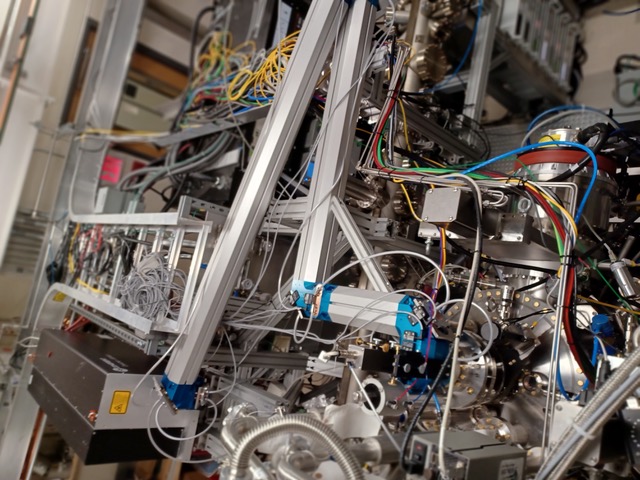
Laser beamline for substrate heater
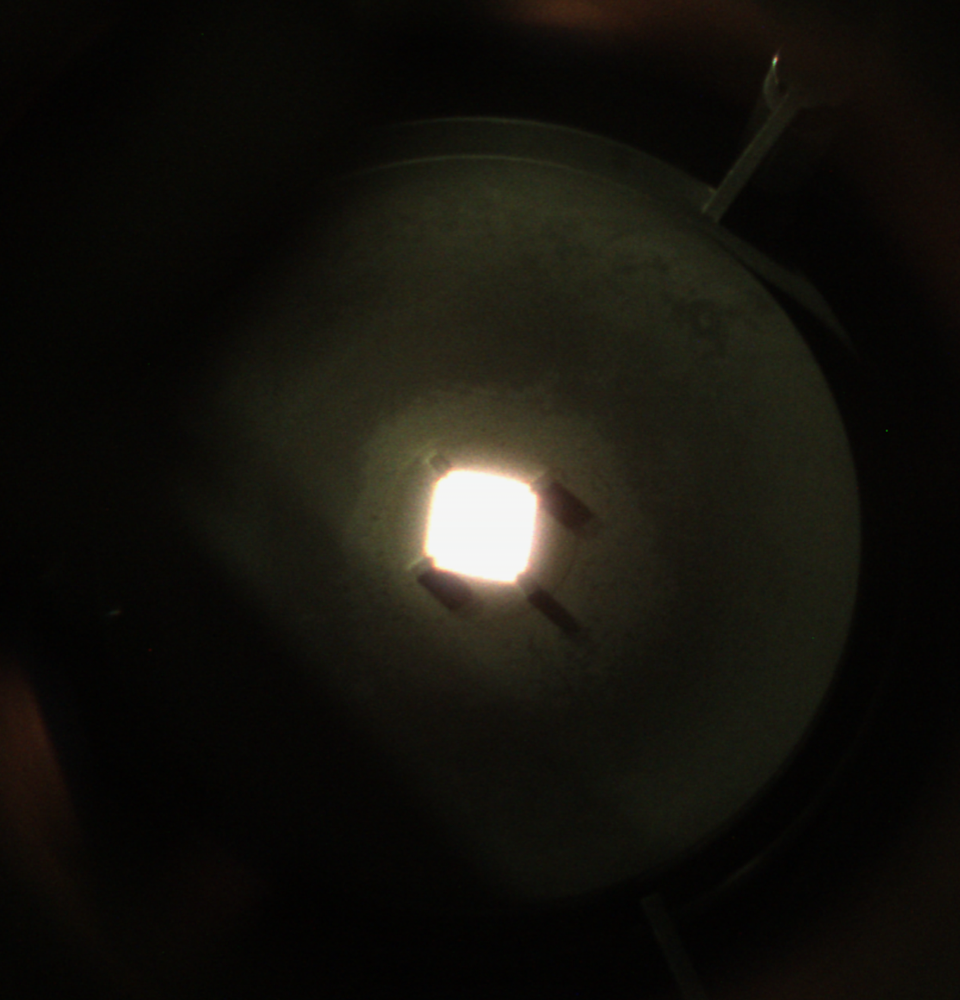
Glowing hot substrate ready for growth
62 Element Molecular Beam Epitaxy Chamber
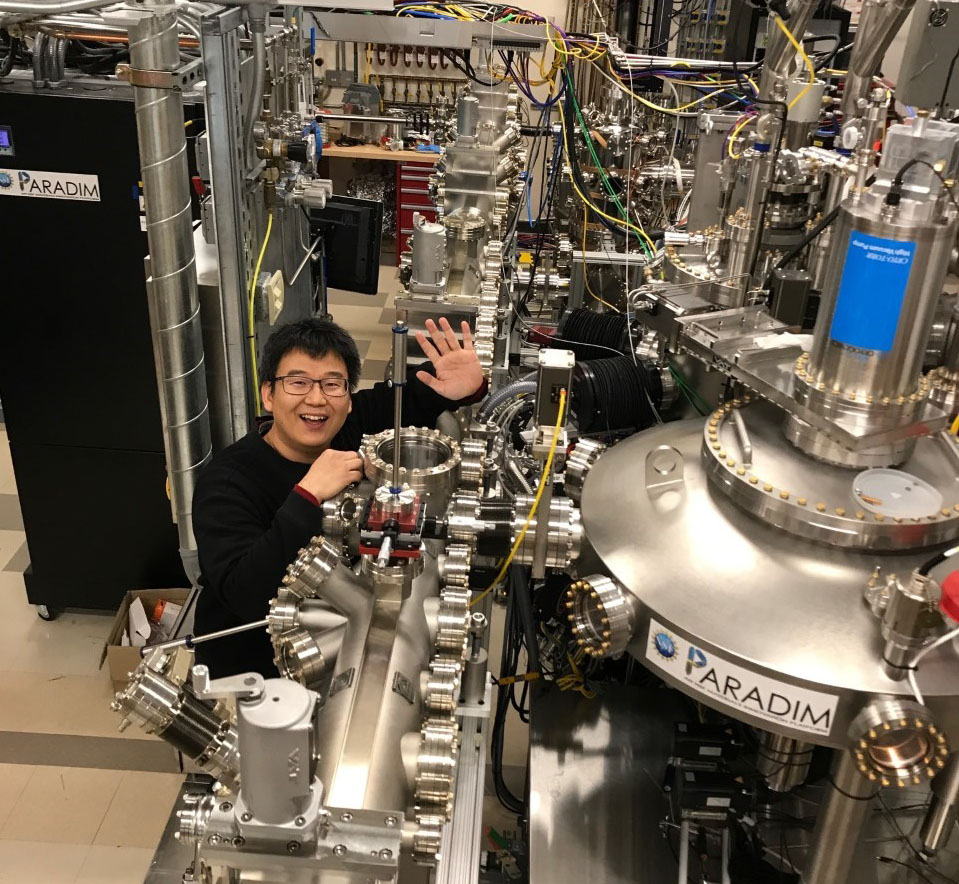
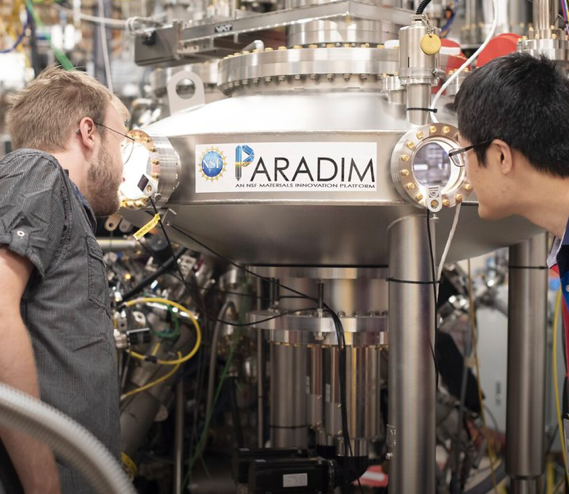
The signature tool in PARADIM’s Thin Film Facility is a fully automated MBE system in which users can select among 62 elements of the periodic table to make the inorganic materials they desire. The allowed 62 elements—all with detailed procedures in place to enable them to be used safely in PARADIM’s MBE system—are shown in color on the periodic table. Any 11 of these elements may be loaded into the MBE system at one time.
The MBE itself is a GEN10 system from Veeco Instruments. The GEN10 is the world’s first research MBE with all of the design improvements that have gone into production MBE systems over the last decade, including robotic transfer enabling round-the-clock, fully automated growth of MBE films. The MBE growth chamber includes an electron-beam evaporation source (used to evaporate elements with low vapor pressures by heating them to temperatures above 2000 °C), a substrate heater that can heat substrates to 1000 °C in high pressures of oxygen or purified ozone, and nine effusion cells, eight of which are differentially pumped and can be refilled individually, without venting the entire growth chamber.
It also contains a suite of in situ analysis tools to achieve accurate composition control (QCM), accurate measurement of the temperature of the substrate itself (BandiT), monitoring of film crystallinity and orientation (RHEED), and the measurement and evolution of film strain (MOSS). Importantly, PARADIM's MBE system is connected via a UHV transfer line to an analysis system in which x‑ray photoelectron spectroscopy (XPS), low-energy electron diffraction (LEED), and high-resolution angle-resolved photoemission spectroscopy (ARPES) can be performed on the pristine surfaces prepared by MBE.
<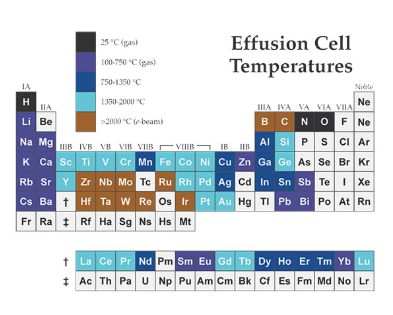
The 62 elements (those shown in color) that users may select among (any 11 at a time) in PARADIM’s MBE+ARPES signature tool.
Sample Publications Using this Instrument
-
G.A. Pan, D.F. Segedin, H. LaBollita, Q. Song, E.M. Nica, B.H. Goodge, A.T. Pierce, S. Doyle, S. Novakov, D. Córdova Carrizales, A.T. N’Diaye, P. Shafer, H. Paik, J.T. Heron, J.A. Mason, A. Yacoby, L.F. Kourkoutis, O. Erten, C.M. Brooks, A.S. Botana, and J.A. Mundy, "Superconductivity in a Quintuple-Layer Square-Planar Nickelate," Nat. Mater. 21, 160–164 (2022) and Highlight #50
-
P.B. Meisenheimer, R.A. Steinhardt, S.H. Sung, L.D. Williams, S. Zhuang, M.E. Nowakowski, S. Novakov, M.M. Torunbalci, B. Prasad, C.J. Zollner, Z. Wang, N.M. Dawley, J. Schubert, A.H. Hunter, S. Manipatruni, D.E. Nikonov, I.A. Young, L.-Q. Chen, J. Bokor, S.A. Bhave, R. Ramesh, J.-M. Hu, E. Kioupakis, R. Hovden, D.G. Schlom, and J.T. Heron, “Engineering New Limits to Magnetostriction through Metastability in Iron-Gallium Alloys,” Nat. Commun. 12, 2757 (2021) and Highlight #39.
-
K.M. Adkison, S.-L. Shang, B.J. Bocklund, D. Klimm, D.G. Schlom, and Z.-K. Liu, "Suitability of Binary Oxides for Molecular-Beam Epitaxy Source Materials: A Comprehensive Thermodynamic Analysis," APL Mater. 8, 081110 (2020) and Highlight #38.







